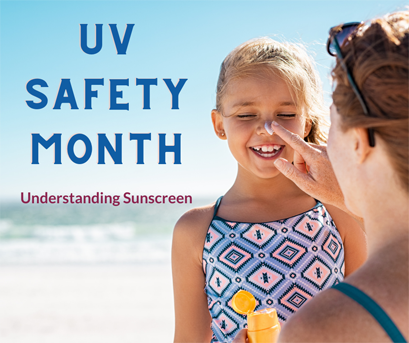Understanding sunscreen
July 20, 2021
One in five Americans will develop skin cancer by the age of 70 years old. The average person only applies 25%–50% of the recommended amount of sunscreen according to the National Council on Skin Cancer Prevention. When spending time out in the sun, the recommendation is to apply at least one ounce (a palmful) of sunscreen every two hours. Sunscreen should be applied more often when sweating or swimming, even if it is labeled as water-resistant sunscreen.
Sunscreens can no longer claim to be “waterproof”. Although if they pass certain guidelines with the FDA, they can claim to be “water–resistant” for up to 40 or 80 minutes.
Even on an overcast day, up to 80% of the sun’s UV rays can get through the clouds. Standard SPF sunscreens only protect against UVB rays which is the radiation that damages the skin and causes sunburn. The sun’s UVA rays however penetrate deep into the skin causing aging, and are a greater risk of skin cancer. When choosing a sunscreen look for one labeled “broad spectrum” or “full-spectrum” which will protect against both UVA and UVB rays, and an SPF (sun protection factor) of at least 30.
When applying sunscreen don’t forget these commonly missed areas: ears, the part in your hair, and the tops of your feet. Lips are also often neglected. Choose a lip balm with SPF protection and apply it frequently.
Here’s a breakdown of the most common sunscreen options and their pros and cons:
Spray – great to apply by yourself, best choice for hairy bodies; avoid spraying to face and using on windy days. Do not use near open flame. Often times not enough is applied, you should spray until your skin glistens, and it is still recommended to rub it in.
Lotion – provides the best coverage, but can be messy, greasy, and takes more time to apply than a spray.
Stick – great for kids as it can’t drip into eyes, great for use on the face, takes longer to apply.
You can also search for sunscreen for sensitive skin, an oil-free, or in a gel application.
In addition to sunscreen, it is always smart to wear a hat, sunglasses to protect your eyes, and protective clothing when out in the sun. Lessen your chances tomorrow by protecting yourself today.
